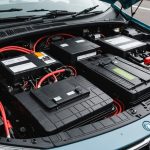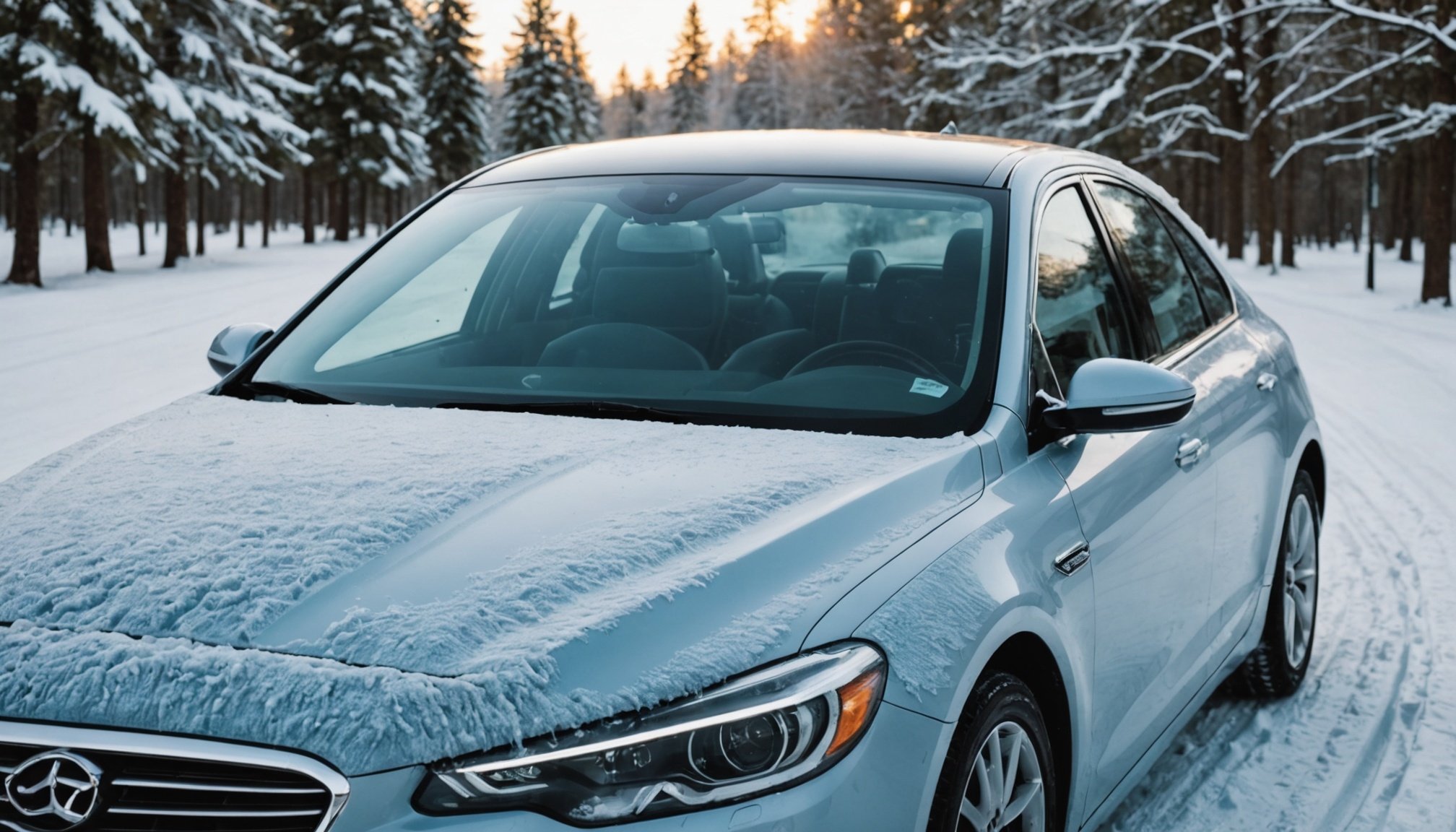Ultimate Guide to Supercharge Your Windshield Defrosting in Frigid Conditions: Key Strategies for Optimal Cold Weather Performance
As the winter months approach, one of the most critical aspects of maintaining your car’s functionality is ensuring your windshield remains clear and frost-free. This guide will walk you through the essential strategies, tools, and techniques to supercharge your windshield defrosting, making your winter driving experience safer and more convenient.
Understanding the Causes of Windshield Frost
Before diving into the solutions, it’s crucial to understand why windshield frost forms in the first place. Several factors contribute to this issue, including cold temperatures, high humidity, and sudden temperature changes. When warm, moist air inside the car comes into contact with the cold windshield, condensation forms and can freeze, creating a layer of frost[1].
Have you seen this : Ultimate guide to securely roof-racking your kayak on an suv: travel without worries of shifting
Here’s a breakdown of the key factors:
- Cold Temperatures: Low temperatures are the primary cause of frost formation.
- High Humidity: Moist air inside the car condenses on the cold windshield.
- Sudden Temperature Changes: Rapid changes in temperature can cause the glass to expand and contract, making it more prone to cracking.
Essential Tools and Products for Windshield Defrosting
Having the right tools and products is vital for effective windshield defrosting. Here are some of the most useful items to keep in your car:
Also to see : Maximize safety: essential tips for seamlessly integrating child car seats with your vehicle’s safety features
Manual Defrosters
Manual defrosters, such as ice scrapers and brushes, are indispensable for any driver. Here are some tips for choosing the right ones:
- Ice Scrapers: Look for scrapers with sturdy handles and durable blades that can withstand harsh conditions.
- Brushes: Opt for brushes with bristles that can sweep away loose snow without scratching the glass[1].
Electric Defrosters
Electric defrosters provide a more hands-off approach to defrosting. These devices can be plugged into your vehicle’s power outlet and direct heat onto the windshield to melt ice efficiently. They are particularly useful for thick ice layers that might be challenging to tackle manually[1].
Windshield Washer Fluid
Using windshield washer fluid specifically designed for winter conditions is crucial. This fluid contains antifreeze properties, preventing it from freezing on the windshield and aiding in the removal of frost[2].
Effective Defrosting Methods
A structured approach to defrosting can make all the difference in ensuring a clear windshield and a safe driving experience.
Pre-Driving Preparations
Before you even start your car, consider these pre-driving preparations:
- Cover Your Windshield: Covering your windshield overnight with a frost guard can prevent ice build-up.
- Homemade De-Icing Solution: If frost has already formed, a homemade de-icing solution of water and vinegar or isopropyl alcohol can be applied to break down the ice. This simple step saves time and reduces the need for extensive scraping[1].
In-Car Defrosting Settings
Once inside the vehicle, use your car’s defrosting settings effectively:
- Start the Engine: Start the engine and let it warm up for a minute.
- Set the Heater: Set the heater to the highest temperature and direct the airflow towards the windshield to melt the ice.
- Engage the Rear Defroster: Engage the rear defroster for the back window to ensure comprehensive defrosting[5].
External Techniques
For external techniques, manual tools like ice scrapers are indispensable:
- Use a Scraper: Use a scraper with a sturdy handle to remove thick ice layers.
- Electric Defroster: If conditions are severe, an electric defroster can be a valuable asset, providing consistent heat to the windshield[1].
Common Mistakes to Avoid in Windshield Defrosting
Even well-intentioned actions can lead to unintended consequences. Here are some common mistakes to avoid:
Using Hot Water
Pouring hot water on a frosted windshield might seem like a quick fix, but it can cause the glass to crack due to the sudden temperature change. Instead, use your car’s defrost settings or a de-icing solution to melt the frost gradually[1][3].
Neglecting Regular Maintenance
Regular maintenance is key to preventing windshield damage. Here are some tips:
- Check Wiper Blades: Regularly check and replace wiper blades to ensure they do not scratch the windshield.
- Park in a Garage or Use a Windshield Cover: If possible, park your car in a garage or cover your windshield to avoid frost and freezing[2].
Preventing and Handling Windshield Cracks in Winter
Winter weather can be particularly harsh on your car’s windshield, causing cracks and damage.
How to Prevent Windshield Cracks
To prevent cracks, follow these tips:
- Use Gentle Cleaning Agents: Use cleaning agents that will not harm the glass or leave scratches on it.
- Cover the Windshield: Cover the windshield when the car is not in use to avoid frost and freezing, which puts pressure on the glass[2].
Dealing with Cracks
If your windshield has a crack, it should be repaired immediately:
- Contact a Professional: Contact a professional or have your windshield checked as soon as possible to prevent expensive replacements and keep your windshield safe.
- Avoid Delay: A small chip can quickly become a large crack due to temperature changes, so it’s crucial to address it promptly[2].
Additional Tips for Winter Windshield Care
Here are some additional tips to ensure your windshield remains clear and safe throughout the winter:
Use the Right Windshield Washer Fluid
Use windshield washer fluid created to work in low temperatures effectively. This helps provide windshield visibility and avoid frost adherence and damage[2].
Keep Your Windshield Clear of Snow and Ice
Make sure to clear all snow and ice off the windshield before driving. This ensures that nothing blocks your view and prevents ice from accumulating on the screen[2].
Check Your Tire Pressure
Cold weather can affect your tire pressure, so make sure to check it regularly. Proper tire pressure is crucial for safety and fuel efficiency[2].
Table: Comparing Defrosting Methods
Here is a comparative table of different defrosting methods:
| Defrosting Method | Pros | Cons | Effectiveness |
|---|---|---|---|
| Manual Scrapers | Quick and effective, affordable | Requires physical effort, can scratch glass if not used carefully | High |
| Electric Defrosters | Hands-off, efficient for thick ice | Requires power source, can be expensive | High |
| Homemade De-Icing Solution | Affordable, customizable, environmentally friendly | Can leave a lingering smell, may damage rubber components | Medium to High |
| Car’s Defrost Settings | Convenient, uses existing car features | Can consume more fuel, may take longer | Medium to High |
| Hot Water | Quick fix (though not recommended) | Can crack the windshield due to sudden temperature change | Low |
Practical Insights and Actionable Advice
Here are some practical insights and actionable advice to help you navigate the challenges of winter driving:
Allow Sufficient Time for Defrosting
Give your car enough time to defrost. On average, allow 10 to 15 minutes for the defroster to work effectively. This ensures that the windshield is clear and safe for driving[3].
Use Safe De-Icing Solutions
Instead of using hot water, opt for safe de-icing solutions like a mixture of water and rubbing alcohol or vinegar. These solutions are effective and do not pose the risk of cracking the windshield[1][3].
Maintain Your Vehicle
Regular maintenance is key to ensuring your car performs well in cold weather. Check your battery, engine block, and tire pressure regularly. A well-maintained vehicle will provide a safer and more efficient driving experience[2].
Quotes from Experts
- “Using the right windshield washer fluid is crucial during winter. It helps provide visibility and prevents frost adherence and damage,” says a spokesperson from Nuvision Auto Glass[2].
- “Pouring hot water on a frosted windshield is dangerous and can cause the glass to crack. Instead, use your car’s defrost settings or a de-icing solution,” advises an expert from Genac Racing[1].: Stay Safe and Prepared This Winter
Clearing your windshield, removing snow, and defrosting your car are essential winter chores that require the right methods and equipment. By understanding the causes of frost, using the right tools and products, and avoiding common mistakes, you can ensure a safer and more convenient driving experience.
Remember, allowing adequate time for your car to defrost, using safe de-icing solutions, and maintaining your vehicle are key to navigating the challenges of winter driving. Stay prepared, stay safe, and enjoy the winter season without the hassle of a frosted windshield.











